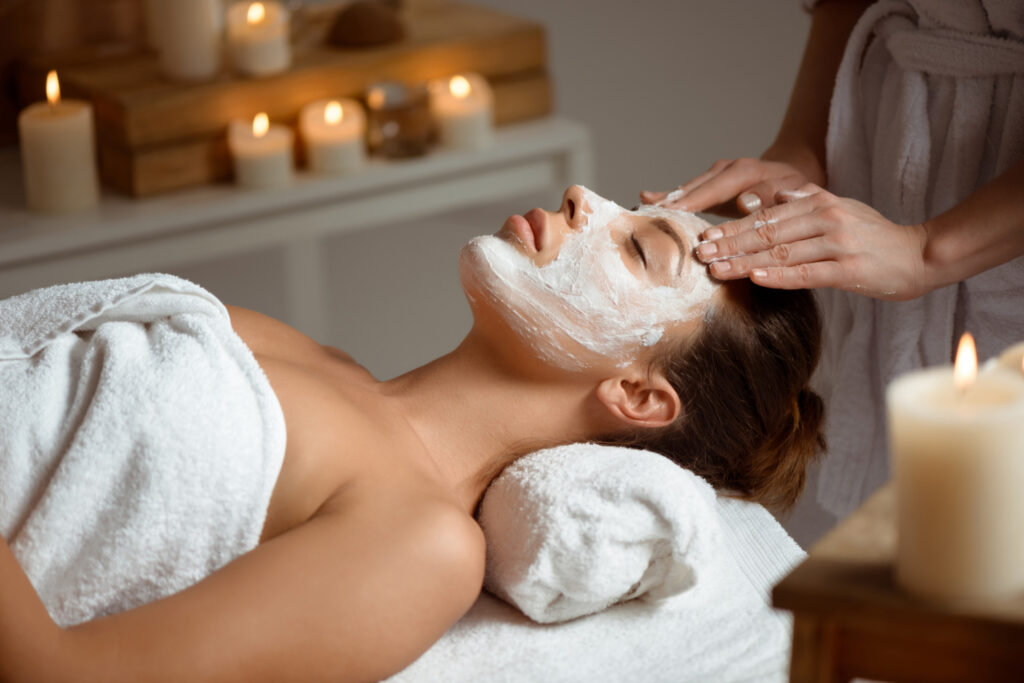5 Beauty Treatments You Can Effortlessly Perform at Home

5 Beauty Treatments You Can Effortlessly Perform at Home

Taking time for self-care can be challenging when life gets busy. However, dedicating a little time to self-pampering can have incredible benefits for your mental and physical well-being. By opting for beauty treatments at home, you can enjoy a relaxing and rejuvenating experience without leaving your comfort zone. Not only does this save you money by avoiding salons or spas, but it also grants you more control over your self-care routine.
As a dermatologist, I often receive inquiries about the best home beauty treatments. While some treatments are better left to professionals due to their expertise, there are plenty of beauty treatments you can easily do at home. Professional treatments may yield more noticeable effects, but they tend to be more expensive and require additional downtime, especially for procedures like peels or laser treatments. Performing your own beauty treatments at home not only saves you time and money but also empowers you to take charge of your self-care routine.
Consistency is key when it comes to achieving healthy skin, nails, and hair. Introducing too many new treatments or frequently changing your routine can lead to breakouts and irritation. Therefore, if you’re considering home beauty treatments, it’s advisable to stick to a few reliable methods and maintain consistency.
Individuals with sensitive skin should exercise extra caution when engaging in home beauty treatments. Similarly, people with darker skin types should be mindful to avoid treatments that may cause excessive irritation or inflammation, potentially leading to skin discoloration or hyperpigmentation.
In this blog post, I’ll be sharing my top recommendations for effective and safe DIY beauty treatments along with some recommended products. Here are my suggestions:
1. DIY Hydrating Treatment:
Have you heard of “slugging”? This skincare trend, popularized recently on social media, involves applying a layer of occlusive ointment like petroleum jelly (Vaseline), Aquaphor, or CeraVe Healing Ointment to the face at night. Slugging creates a barrier that locks in moisture and prevents transepidermal water loss, resulting in smoother, more hydrated skin. This technique is particularly beneficial during the dry winter months. However, it’s important to note that slugging isn’t suitable for everyone, as it can clog pores and cause breakouts, especially for those with oily or acne-prone skin.
Slugging Hydration Treatment:
Step 1: Cleanse your face gently.
Step 2: Pat the skin dry, leaving it slightly damp.
Step 3: Apply a thin layer of the ointment to your entire face using clean fingers. For added hydration, consider applying a skincare product with hyaluronic acid or glycerin before the ointment, as they draw more moisture into the skin.
Step 4: Leave it on overnight and rinse off in the morning with water or a gentle cleanser.
You can repeat this slugging treatment as needed, depending on the dryness of your skin. Additionally, you can apply a similar process to the rest of your body if you experience dryness on your arms, legs, hands, or feet.
While many people are tempted to try facial treatments using household items like lemons, oatmeal, avocado, or sugar, it’s generally not recommended. As a dermatologist, I advise reserving food for consumption rather than for skincare purposes. Instead, consider regular exfoliating treatments to achieve a healthy, radiant glow without professional chemical peels or laser treatments. There are two types of exfoliation: physical (mechanical) and chemical.
Physical Exfoliation:
This method involves removing dead skin cells and debris from the skin’s surface using abrasive tools such as scrubs or brushes. Physical exfoliation can be more intense and may cause irritation if not done correctly. Examples of physical exfoliants include scrubs, loofahs, and cleansing brushes.
Chemical Exfoliation:
Chemical exfoliation utilizes substances like alpha-hydroxy acids (AHAs), beta-hydroxy acids (BHAs), or polyhydroxy acids (PHAs) to dissolve dead skin cells and unclog pores. Chemical exfoliation is generally gentler and suitable for all skin types, including sensitive skin. Some examples of chemical exfoliants are glycolic acid, lactic acid, and salicylic acid. Dermatologists often recommend chemical exfoliation as it minimizes the risk of irritation and inflammation that can lead to breakouts.
3. DIY Hair Treatment:
If your hair feels dry and damaged, a DIY hair treatment can help restore its health and shine. Several popular oils can be used for home hair treatments, such as argan oil, castor oil, tea tree oil, and coconut oil.
Coconut Oil Hair Treatment:
Step 1: Warm the coconut oil, ensuring it’s not too hot to avoid burns.
Step 2: Apply the coconut oil to your hair and scalp, massaging it in. Leave it on for at least 30 minutes or overnight for optimal results. If left overnight, cover your hair with a shower cap and protect your pillow from oil stains.
Step 3: Rinse thoroughly and follow up with a gentle shampoo and conditioner.
4. DIY Light Therapy:
Light therapy is a popular treatment for acne and various skin conditions. It involves using different wavelengths of light to target specific concerns. You can perform light therapy at home using devices like LED masks or handheld LED devices. Blue light effectively kills acne-causing bacteria, while red light can reduce inflammation and promote collagen production. When using a light therapy device, carefully read the instructions and adhere to the recommended usage time. To safeguard your eyes, it’s crucial to wear eye protection and avoid light therapy if you have a history of seizures or are taking certain medications.
5. DIY Home Pedicures:
Pedicures are an excellent way to pamper your feet and keep them looking and feeling their best. By doing your pedicures at home, you can save a significant amount of money compared to visiting a nail salon.
Home Pampering Pedicure:
Step 1: Begin by soaking your feet in warm water to soften the skin and relax your muscles. Adding Epsom salt or essential oils to the water can enhance the soothing effect.
Step 2: Gently pat the skin dry. Apply a keratolytic moisturizing cream to your feet and legs to address dry and thickened skin. Keratolytics help soften and break down the keratin protein in the outer layer of the skin, making it easier to remove. Examples of keratolytics include salicylic acid, urea, and ammonium lactate. You can also use a pumice stone or foot file to gently exfoliate any thick calluses.
Step 3: Trim and shape your toenails. Avoid pushing back your cuticles with a cuticle pusher, as this can disrupt the protective seal provided by the cuticles.
Step 4: Apply a clear base coat of nail polish, followed by your preferred color and a clear top coat to prolong the polish’s lifespan and shine.
In conclusion, performing beauty treatments at home can be a wonderful way to care for your skin, hair, and nails. However, it’s crucial to exercise caution, use high-quality products, and follow proper instructions. Always conduct a patch test before using new products, and if you experience any irritation or discomfort, discontinue use immediately and consult a dermatologist. By taking care of your skin and hair at home, you can radiate confidence and feel beautiful every day





Responses